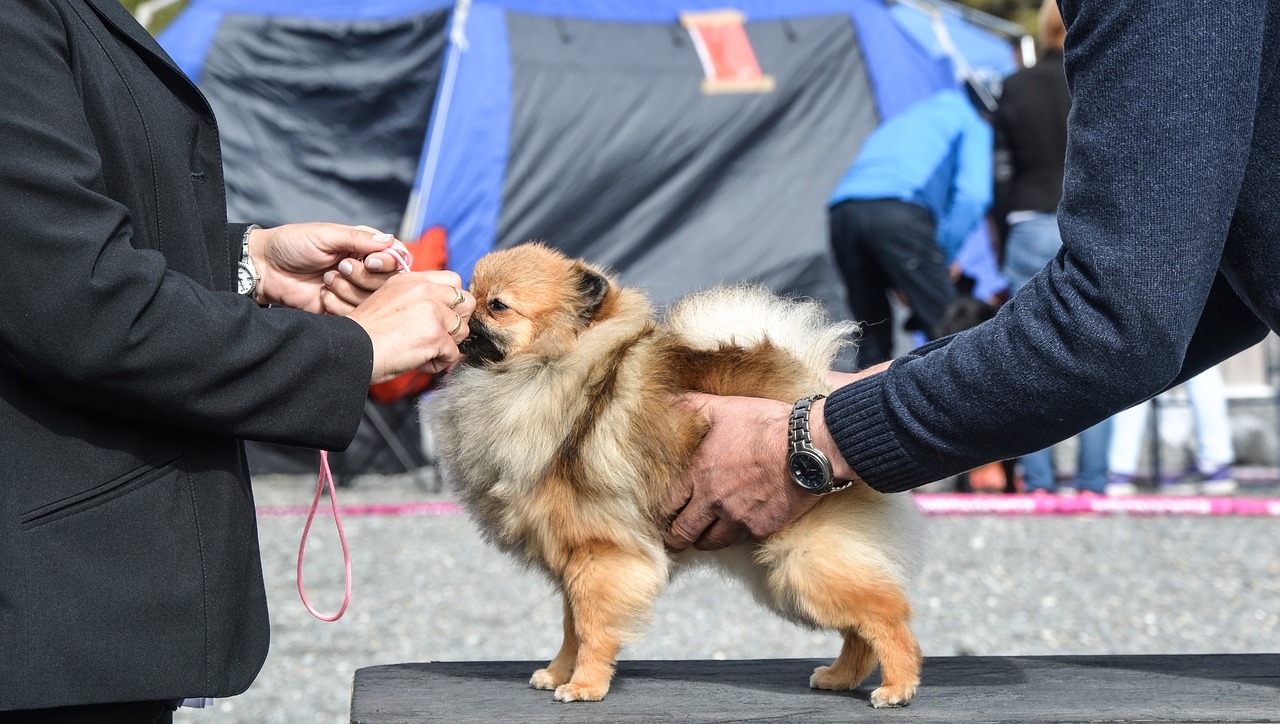Have you ever seen a dog show on TV and thought that your canine companion would look great in front of a crowd? Dog shows can be a fantastic learning, bonding, and enjoyable experience for dog and owner alike, but they might seem far out of reach. Today, we will help give you the info and confidence you need to step out of your comfort zone and start getting involved in dog shows.
Teaching Your Dog the Tricks
Starting your dog’s training with simple tricks is a great way to build a foundation for more complex behaviors. We have extensive resources available to help you learn the basics, and we can also jumpstart your dog’s skills through our dog training programs. To quickly recap:
Start with the Basics – Choose a quiet environment free from distractions. Use clear, consistent commands for each trick, and work through commands like ‘Sit,’ ‘Stay,’ and more until you feel your dog has complete mastery.
Positive Reinforcement – After a successful trick performance, reward your dog with treats, praise, or playtime.
Short Sessions – Keep training sessions short, about 5 to 10 minutes, to maintain your dog’s focus and prevent frustration.
Patience is Key – Be patient and never punish your dog for not understanding or performing a trick. It’s all about positive experiences.
Remember, every dog will learn at their own pace that you might be unable to change. As your dog masters each trick, you’ll pave the way for a confident and well-behaved show dog.
Dog Show Ready: Socialization Techniques
Now that you’ve mastered the basics of dog training, it’s time to introduce your pup to the broader canine community. Socialization ensures your dog is safe and well-behaved around other dogs and people later down the line at a show or competition. If your dog is already friendly and social, great! If not, here are some steps to enhance your dog’s social skills:
Gradual Introduction: Begin with short visits to less crowded places, gradually increasing the duration and complexity of social scenarios.
Positive Associations: Pair social experiences with treats and praise to create positive associations.
Observe Body Language: Learn to read your dog’s body language to gauge comfort levels and prevent overwhelming situations.
Consistent Exposure: Regularly expose your dog to various environments, sounds, and groups of people and pets.
Transitioning to the Dog Show
Before you can dazzle the judges with your dog’s impeccable manners and stunning appearance, you’ll need to familiarize yourself with the specific requirements of the dog shows you’re interested in. Each show may have its own set of rules and standards, so you need to do your homework.
Research the standards that judges are typically looking for in your breed. Different breeds may have different expectations regarding size, temperament, look, and types of tricks/performances. Many dog shows also separate the competition based on the experience of the owner, dog, or both.
After initial research, the next step is to prepare, prepare, prepare. Whatever performance or routine you choose, continue practicing until you and your dog are on the same wavelength. Remember – don’t train too hard. It should still be an enjoyable experience for the two of you.
You should gain experience performing in front of a crowd, either a mock crowd of friends and family or a smaller, local competition without much pressure. To make sure you have the best shot at success, bring your dog to a groomer and a vet beforehand. Keeping them healthy and looking their best will allow them to give all they have at competition time.
Dog shows can be a fantastic bonding experience, but if you are overwhelmed and have no idea how to start, contact Gulf Coast K9 Dog Training today. We can help you and your furry friend start on the right paw.





